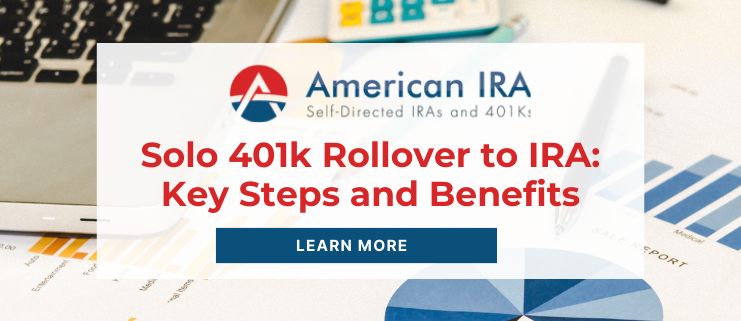Solo 401k Rollover to IRA: Key Steps and Benefits
If you have a Solo 401(k), you already know some of the benefits. You know they have high contribution limits, that they’re flexible and easy to use, and that they’re relatively straightforward for those who qualify. But maybe you want something different. Maybe you want to roll this over to an IRA due to other concerns, such as using a Self-Directed IRA to expand your retirement investment horizons. What steps should you take to get started? And how should you proceed? Perhaps most importantly, what are the benefits to doing so? Let’s explore some key Solo 401(k) rollover benefits and how you might go about one of your own.
Understanding the Solo 401(k) Rollover to IRA
First, let’s define a rollover. A rollover is what happens when you transfer assets from an old account, such as an old employer-sponsored retirement plan, to your IRA. When you roll this money over from an employer-sponsored plan like a 401(k) to an IRA, you can potentially move that money tax and penalty-free, provided that you follow the rules.
The benefit of this approach is that you generally won’t have tax implications if you use a direct rollover, assuming that your assets move directly from the old plan to your new IRA in a trustee-to-trustee transfer of funds. If you don’t activate any taxable events created here (in the event you’re moving from a pretax account to a pretax account), then you’re likely going to enjoy the process with minimal consequences. From there, you’ll be able to use your Self-Directed IRA as you please, enjoying the new funds that currently top it off.
What About Roth IRAs?
Yes, generally you can roll over a 401(k) into a Roth IRA. However, there are some eligibility issues here—not everyone can do it—and you’ll also have to know about the potential tax implications. For example, if you have money in a Roth 401(k), rolling it directly into a Roth IRA is much easier. But if you’re using pre-tax funds within the 401(k), then converting that money into a Roth IRA will result in a taxable event. Some people will pay for this taxable event because they want the money in their retirement account.
You might ask why people might take on a taxable event just to convert to a Roth IRA. The answer is that even with paying taxes on that taxable event, it might be worth it to a few investors. After all, once the money is in the Roth IRA, it’s now post-tax, which gives the investor many more options for investing. They can hold that money in the account long after hitting retirement age, for example, because then there will be no Required Minimum Distributions on the account. You can simply let the money continue to grow over time.
Rolling over funds into a Self-Directed IRA is a possibility for a lot of investors, but it helps to know a few things. First, you’ll have to know what your goal is. What kind of account are you moving this to? Because the answer to that question can affect whether the event of rolling the money over into the new account is taxable. Additionally, you’ll have to consider your individual goals with the new account. What do you want to achieve with it?
To make sure you start off on the right foot, it helps to consult with a Self-Directed IRA administration firm who can help you handle the administration on a rollover. Reach out to us here at American IRA by dialing 866-7500-IRA today.



